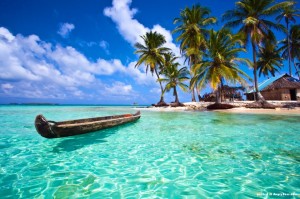Panama’s indigenous cultures has been a focal point for cultural preservation, natural preservation, linguistic preservation, and tourism for quite some time now. Panama is a country of remarkable cultural diversity, with indigenous communities playing a crucial role in shaping its identity. While many visitors come for the beautiful beaches and modern cityscapes, a deeper exploration of Panama’s indigenous cultures reveals a rich tapestry of traditions, languages, and heritage that have withstood the test of time. In this guide, we will explore the major indigenous groups in Panama, their traditions, and how visitors can respectfully engage with these communities.
The Major Indigenous Groups of Panama
Panama is home to seven officially recognized indigenous groups These groups are as follows:
- Guna (Kuna) Yala – Famous for their beautifully embroidered molas and self-governing region along the Caribbean coast.
- Ngäbe-Buglé – The largest indigenous group, known for their vibrant traditional dresses and agricultural practices.
- Emberá-Wounaan – Living in Panama’s rainforests, they are skilled artisans known for basket weaving and wood carvings.
- Bribri – A smaller group residing in the Caribbean region, known for their deep spiritual connection with nature.
- Naso Tjer-Di – One of the few indigenous monarchies in the world, preserving ancestral governance.
- Bokota – A lesser-known group residing in remote forested areas, maintaining traditional lifestyles.
- Teribe – Closely related to the Naso, they live in northern Panama and maintain traditional governance.
Traditional Customs and Practices
Each indigenous group in Panama has unique traditions and customs that reflect their deep connection to nature, spirituality, and community life.
- Handicrafts: Many groups produce stunning handcrafted items, such as the intricate molas of the Guna people and the woven baskets of the Emberá.
- Music and Dance: Indigenous music is an essential part of ceremonies and festivals, often featuring drums, flutes, and traditional dances.
- Spiritual Practices: Many communities maintain their spiritual beliefs, often centered around nature and ancestral worship.
- Sustainable Living: Indigenous groups practice sustainable agriculture and fishing, preserving the delicate balance of Panama’s ecosystems.
Visiting Indigenous Communities Respectfully
Visitors to Panama have the unique opportunity to experience Panama’s indigenous cultures firsthand. However, it’s essential to do so respectfully.
How to Engage Responsibly
- Choose Ethical Tours: Many indigenous groups offer community-led tours that allow visitors to learn directly from locals while supporting their economy.
- Respect Local Customs: Dress modestly, ask before taking photos, and follow local traditions.
- Support Indigenous Artisans: Buying directly from indigenous artisans helps sustain their communities and keeps traditions alive.
- Learn the Language: While many indigenous people speak Spanish, learning a few phrases in their native languages shows respect and appreciation.
Best Places to Experience Indigenous Culture
- Guna Yala (San Blas Islands): A stunning archipelago governed by the Guna people, offering cultural immersion and eco-tourism.
- Emberá Villages (Chagres National Park): Experience traditional dances, canoe rides, and artisan crafts in the rainforest.
- Ngäbe-Buglé Comarcas: Visit coffee plantations and experience traditional life in the western highlands of Panama.
Final Thoughts
Panama’s indigenous cultures offer a window into the country’s rich and diverse heritage. By engaging with these communities respectfully and supporting their traditions, visitors can gain a deeper appreciation for the living history that defines Panama. Whether exploring the San Blas Islands or trekking through the rainforest, an encounter with indigenous cultures in Panama is an unforgettable experience. To learn more about Panama’s indigenous cultures, contact us online here, and we’d be happy to connect with you.
